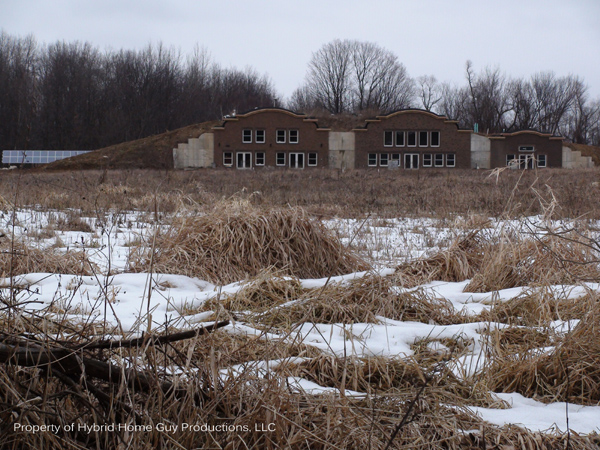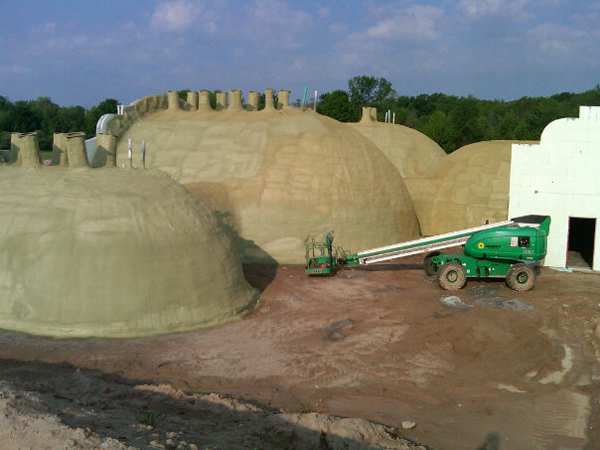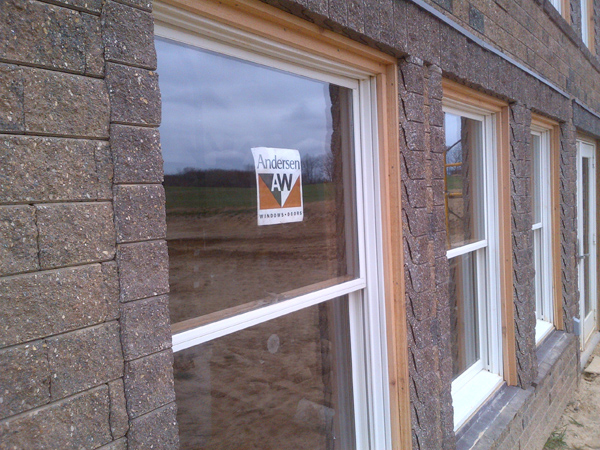When Adam D. Bearup was first approached by a potential client with the plans to build an earth shelter house in Northern Michigan, he turned the project down. It’s not that he doesn’t have an extensive background in green home building — in fact, he wrote a book on that very subject, called Build Green, Make Green, Save Green. Nor is he a stranger to the earth ahelter style of building (which is covered in the book).
It was just that the plans had, well, some challenging elements, the most salient of which was an underground barn.

Designed with global warming-related natural disasters in mind, the home consists of five underground domes, one of which is a large “barn” dome that’s open on two sides. This element of the multiple-dome home, slated for a sustainable homestead farm, was designed to allow animals a safe enclave in the event of a disaster such as a tornado.
Bearup worried about this element of the project, until he happened to meet a woman at a conference on sustainable agriculture (another interest of his) who offered insight into how such a barn could work without spooking animals and endangering their human caretakers. That woman was Temple Grandin, a designer of livestock handling facilities and a professor of animal science at Colorado State University (as well as perhaps the most famous autistic person alive).

When Bearup told Grandin about the plans that called for this unique barn (which, in some places, is nearly 30 feet underground), and his trepidations about accepting the job to build it, Grandin provided him with the key to making it work: a series of “sun tunnels” that bring natural daylight below ground. This natural lighting would keep the animals from panicking at being led underground, she said. Fortified by this insight from one of world’s foremost experts on animal psychology, Bearup accepted the job.
That was back in 2009; the project was completed in 2011, and incorporates a plethora of green building products and strategies. The home is positioned optimally for passive solar exposure (5 degrees to the southeast) — as its solar power array — and it functions entirely off the grid. A propane-fired generator was installed to assist the 48-volt battery bank when Michigan’s gray winter days stretch on, but the homeowner has found that, under normal use, the battery bank will last around three days with zero input from the sun.
Consisting of shotcrete covered in sprayfoam, each of the domes have their own ventilation systems, their own heating systems, and their own electrical services, which allows the homeowner and builder to evaluate how each of them performs. Because the entire home is insulated by the surrounding earth, its interior temperature never dips below 50 degrees; the sun kicks in during the colder months to heat the domes to an average of 72 degrees without the use of supplemental heating.
The Northern Michigan earth shelter project operates as a training facility, a home and a functioning farm. The farm employs biodynamic agriculture (a form of organic agriculture) in its hay fields and grazing pastures, as well as sustainable strategies like grazing rotations for the farm’s livestock, which include Scottish Highlander cows, Guernsey milk cows, horses, chickens, turkeys, rabbits, sheep, and pigs.
A series of videos on the construction of the project is available online.
